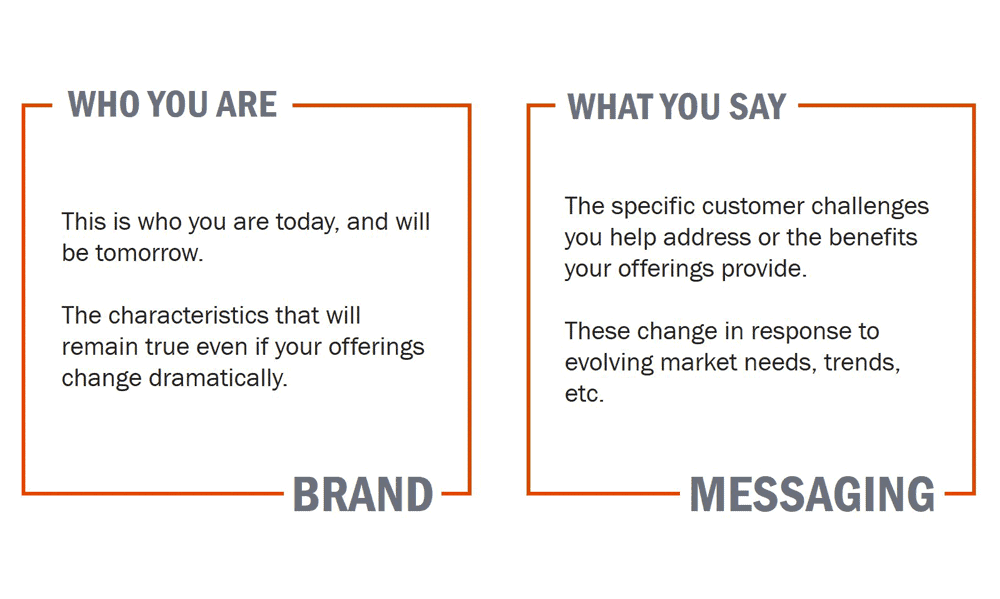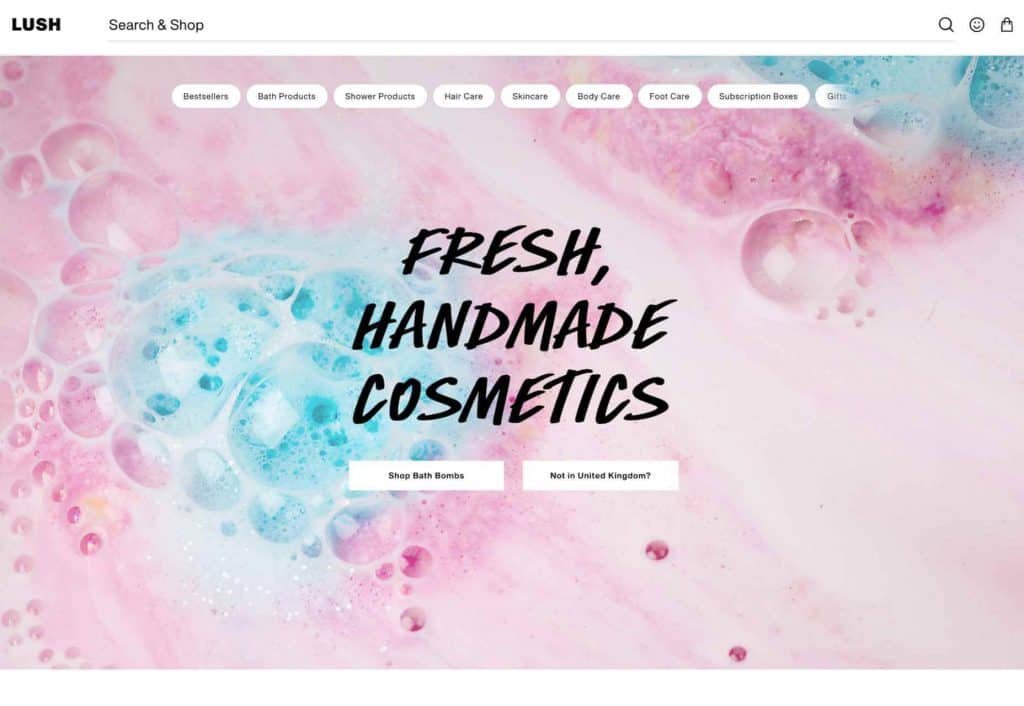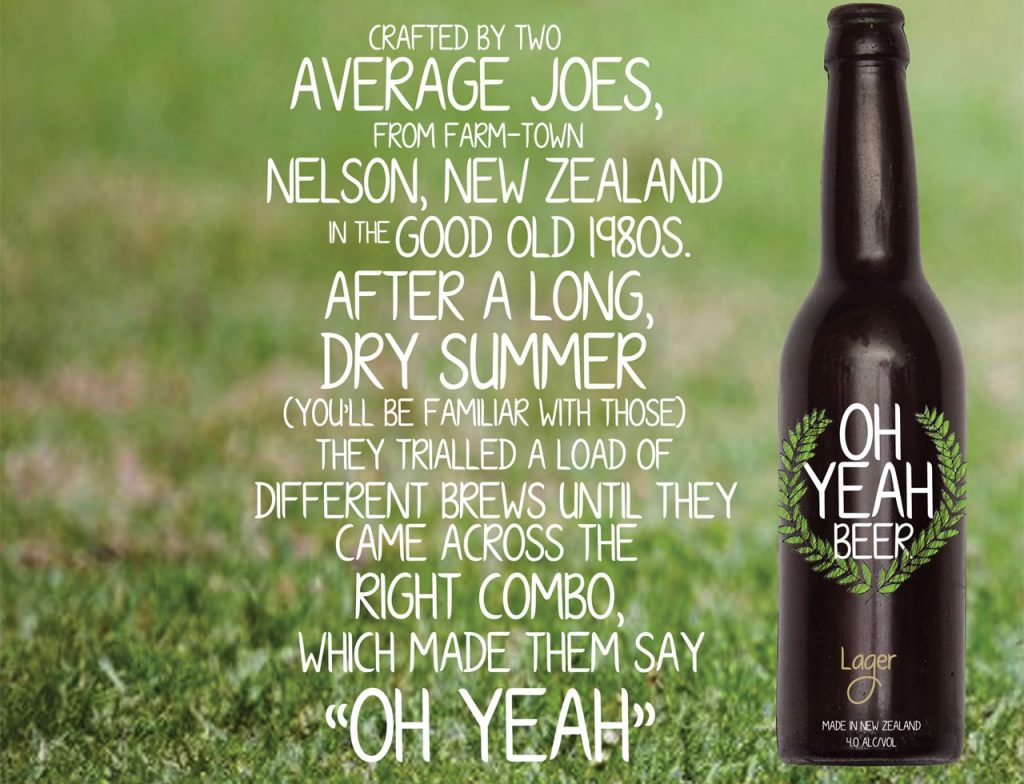How to Create a Brand Message That Resonates With Your Audience
A brand message is a specific set of words that identifies the brand as different from other brands in the same market. These words are used on packaging, signs, billboards, website and marketing materials.
To create a message that resonates with your audience, start by asking yourself three questions:
- What do I want my brand to communicate?
- Why does my audience need to hear what I'm saying?
- And what should my brand message say?
In other words, think about your brand purpose, why you're different, and what makes you unique. The more you can answer these questions, the easier it will be for you to craft a compelling brand message.
A brand message is a company's promise to its customers. It tells customers what they can expect from their relationship with that company. It is the glue that holds the customer experience together.
But how do you create a message that resonates with your customers?
This post provides a step-by-step process to develop a brand message that connects with your audience.
Table of Contents
What Is A Brand Message?

Brands, or companies that sell products to consumers, usually have a brand message. A brand message promises consumers what quality they can expect from the product.
A brand message is essentially a promise, whether “all-natural” or “hypoallergenic,” indicating to the consumer what quality the company expects to deliver. It's part of the marketing strategy that encourages consumers to trust the company and buy the brand.
The question of what a brand message is, comes up in many contexts, such as whether you should eat organic food, drink water out of plastic bottles, or buy a brand-new car. The answer is that there is no right or wrong choice. It's up to you to decide how much you're willing to pay for a brand that meets your needs, but there is a brand message behind it.
When wondering how to market your product, whether you're an individual seller or selling a product for a company, you'll want to consider the brand message the company or organisation is promoting.
What Should I Consider When Choosing A Brand Message For My Product?
A small business selling one product or a multi-national corporation must have a brand message.
A brand message is essentially a promise the company makes to consumers about what quality they can expect from the product.
Consider the following questions when choosing a brand message for your product:
- Does the brand stand for the quality that it promises?
- Do the people who make or sell your product believe in the brand's value?
- Is the brand's value trustworthy?
- Are there other brands with similar messages that compete for your attention?
- Will you be able to trust the brand when it comes to your money?
For example, if you're a consumer who wants to buy a particular brand of toothpaste, you want to know that the company that makes it stands for the quality of its product. You also want to be sure that the people who make it truly believe in the product's value. You want to know that you can trust the brand's claims and that it won't deceive you. You want to know that your money will go to support a worthy cause or that you will use it to help others.
If you're looking for a brand that sells a particular car brand, you will want to know that the people who make or sell it are invested in the brand's message and values. If there are companies with similar values that you can compare with, you'll want to be sure that it's a real competitor, not just another company.
Does the Brand's Message Fit Me?
Different products, whether cars, books, or clothes, all come with a brand's message. In general, however, there are four main types of brands:
- Generic brands – these are brands that have no brand message. They may be made by the same company or the same type of product, but they do not promote a particular set of values or a sense of trust. The name of a generic brand is often very similar to the original brand's name.
- Manufacturer brands – these are brands that are designed to make a particular product, such as cars, refrigerators, or phones. The manufacturer of the product owns them, and they have a particular brand message that represents the quality of the product.
- Premium brands – these are brands that promise a high level of quality. They may be based on the quality of the product or on the company that is selling the product.
- Luxury brands – these are brands that promise luxury. They are more expensive than the competition, and their price reflects that. They tend to be more exclusive and often carry a higher social status.
How to Create a Brand Message That Resonates

Consider your target audience if you don't know where to start with your brand message. You want to be able to connect with them, so your brand message should reflect what they want to hear.
You can learn a lot about your target audience by doing market research. A survey of your target audience is often a great place to start in today's marketing landscape. You can get demographic data and even better insight into your audience's attitudes and preferences, such as the kind of messages they respond to and the topics that interest them. This helps you understand their needs and what they're looking for.
Once you have a clear idea of your target audience, you can determine what kinds of messages would resonate most with them. You can also determine whether a specific message is appropriate for your brand or if it needs to be modified for your audience.
You may have several messages for your brand that you can choose from, each with its target audience. For example, you might develop a campaign for an older, younger, and more mature audience. We can tailor each message to a specific audience, but once you've created your brand message, it's crucial to test it.
Tailor your brand message to your target audience by asking them questions such as:
- What do you think about this message?
- Do you agree with this message?
- Does it seem like something you would be interested in?
- Would it be useful?
- How much attention do you want to give it?
- What words do you like or dislike?
- What are your expectations from this brand?
- How could this message benefit you?
- Can you imagine using it?
- How would you feel about it?
- What is the best way to present this message to you?
In many cases, the answers to these questions will help you create a brand message appropriate for your target audience.
Which Message Should You Choose?
Your brand message must speak to your audience while respecting your values and ethics. You don't want to be disingenuous or self-serving, even if it is.
Consider the following to ensure your brand message speaks to your audience and aligns with your brand's values.
Think about your audience's values and beliefs. You may already know these, or you may need to find out. Once you know, crafting a message compatible with your brand's values is easier.
You may have different messages for different audiences, such as:
- An older audience
- A younger audience
- A more mature audience
- Or a more sophisticated audience
Consider the value of your product or service to your audience, and make sure your message is consistent with it. If you're offering a product or service that is helpful, relevant, and relevant to your audience, they'll be more likely to remember it, share it, and buy it.
You want your brand message to communicate your brand's values and ethos. You may want to explain your brand's history or introduce your staff or employees. Or you may want to let people know what's in it for them. Your brand message can include a statement like:
- “We believe in ….”
- “We're known for ….”
- “Our goal is to ….”
- “We're committed to ….”
- “We're proud to be a part of the ….”
- “We're here to help ….”
- “We're passionate about ….”
- “We have an award-winning ….”
- “We are dedicated to ….”
Ask your target audience what they think about your brand. Find out what resonates and what doesn't. It's often difficult to see where your brand message needs progress, but you can always use it to find areas for improvement.
If you notice a strong negative response to a specific topic, you may want to avoid it in your brand message. For example, if your brand is based on sports, you might want to steer clear of talking about sports teams, leagues, or players. You can also steer clear of using swear words or innuendo.
It's also good to consider your audience's demographics. For example, if your brand appeals to young people, you may want to avoid making statements about older people. Also, you might want to avoid political or religious statements since you don't want to offend anyone.
If you know your audience well, you can also tailor the tone of your brand message to them. For example, if you're running a business that sells books, you can use an informal style.
Identifying Your Target Market

When deciding on the best positioning for your marketing, it's essential to know where you want to target. Different markets require different marketing strategies, so choosing the market with the most success for your brand is critical.
There are many different types of people with unique needs that you can target with your products.
Understanding the differences among these markets can help you decide on the best approach for your product or service.
For example, baby boomers have higher spending levels, and many are willing to spend more for a product they perceive as high quality. If your brand is marketed to this demographic, you should focus on quality, durability, and ease of use. Baby boomers generally look for products built to last and are easier to use, meaning your product has to offer these qualities to succeed.
In addition, baby boomers are often loyal to brands and tend to be willing to try products for more extended periods than younger people.
Baby boomers are also usually the primary breadwinners in their households and are more likely to be involved in their children's lives. For this reason, many baby boomers prefer to purchase products designed with their children in mind.
Baby boomers are also more likely to own a home and are much more likely to want home improvement products. The baby boomer generation is responsible for a large part of the housing market, meaning many home improvement products are specifically marketed to them.
It's important to know which demographic you want to target with your marketing since it will affect the type of products that you should be creating and selling.
Defining Your Brand

Creating an authentic voice is one of the most critical aspects of branding. But how do you define that voice?
One way to get started is to ask yourself some questions. You need to consider what type of person you are and what kind of business you are trying to build. Are you a mommy blogger? A fitness trainer? A creative consultant? An entrepreneur? A scientist? And what are your passions, skills, and talents?
Once you have a better idea of what type of brand you want to build, it's time to start thinking about how to articulate your brand. This involves defining what type of personality or style you want to present to the world.
What Do You Want to Be Known for?
This is where you start to think about what your brand stands for. It's your opportunity to communicate why your brand matters to the world.
So, how do you start to define your brand? Begin by looking at yourself and thinking about what you want to be known for. Think about who you are as a person.
- What are your strengths?
- What are your values?
- What makes you unique?
- How can you stand out in the crowd?
Consider what you enjoy doing and what types of people you naturally attract. Start to explore the things that make you come alive. Once you know what that is, you can start to share your brand story with the world.
Start to brainstorm and write down your brand's voice. Write about what you like, what you don't like, and what you feel passionate about. You can also write about the values you share with the world.
What Are Your Unique Selling Points (USPs)?
USPs are the brand attributes that make your brand distinct. For example, if you are a designer, maybe your USPs are creativity, fashion sense, or artistic ability. If you are a fitness expert, maybe your USPs are exercise knowledge, fun classes, or great workouts.
Your brand's USPs should be what people will say about you when you are no longer in the room. So, what are your brand's USPs?
What Are Your Strengths and Weaknesses?
Another way to define your brand is to take a step back and think about what you do well and what you don't.
You may have heard this before but you are only as strong as your weakest link.
Think about the things that matter to you. If you are an entrepreneur, think about the projects or products you are most excited about. You may want to talk about how much fun you had working on them, the lessons you learned, and the clients you met.
What Are Your Passion Points?
You may feel like your life is chaotic, but it doesn't have to be. When you are feeling overwhelmed, it's hard to remember to stay grounded. Life can inspire you to create a brand that speaks to whom you are while also being authentically you.
Take a moment to think about the things you love to do and the things that bring you joy. What does that look like? What are your passion points?
How Can You Make Your Brand Stand Out?
Next, you need to consider how to make your brand stand out. When discussing what your brand stands for, it's essential to include specific information and examples.
When you are talking about your brand, you are communicating with the world. People are constantly looking for something new and exciting. Don't underestimate your voice, authenticity, and brand power.
How to Get Started on Your Brand?
One way to get started is to review your favourite social media posts and find the things that resonate with you. Start to think about the things you love and find inspiration in them.
Think about your values and find ways to incorporate them into your brand. If you want to be known for your love of fitness, talk about your workout programs or the classes you offer.
The next thing you need to do is make sure that the voice you are creating is authentic. You may be tempted to copy other people's voices or mimic famous people's voices. Resist this temptation!
Instead, try to find your own voice. Start by writing your brand out loud. What sounds like you? Whom do you want to be? What makes you feel alive? When you find the words that speak to you, share them with the world.
Crafting the Message
Crafting a brand message is a crucial first step towards your business's success. If you haven't done so, you must write down everything unique about your product or service. You can use the following tips from there to create a compelling brand message.
Have you ever read a magazine or newspaper and noticed a particular headline? If so, you know how to create a brand message. A great brand message is often defined by a catchy headline that entices people to read on. This makes a brand message easy to remember and easy to share.
You've probably heard the expression, “it's not what you say; it's what people hear.” The same principle applies to branding. Your company's brand is its promise to the world. It's the thing that people think about when they talk about your company.
A brand message is about much more than the product or service itself. It should include any promises you make to your customers. For example, Apple is known for creating devices that are reliable and easy to use. But that doesn't mean that Apple only creates products like that. It also means that Apple is known for being reliable, easy to use, and user-friendly.
Similarly, a restaurant might promise to deliver quality food. But it might also promise to deliver high-quality meals quickly and efficiently. When creating your brand message, consider how your message is communicated. Think about what people associate with your brand and how you plan to build your brand.
Your brand message should be simple, memorable, and concise. It should tell people what they will gain from buying your product or using your service. It's essential to be clear about your brand promise and to communicate that in your brand messaging.
You must also identify what's unique about your brand and what differentiates it from others. What does your brand do that other companies don't? How does your brand stand out from other companies? This information is helpful in the long run. After all, if your competitors are offering similar products or services, people may not see the need to buy from you. But, if you can show that your brand is something special, your customers may be more interested in your offer.
So, how can you craft a brand message? Consider these questions:
- What will my customers gain from using my product or service?
- How will I make my customers' lives better?
- How can I show that my brand is unique?
Conclusion
Creating a brand message is like writing the next great American novel. In other words, it takes a ton of time and effort. But you can't put the cart before the horse.
The first step is to understand your customer. What is it that they want? What makes them tick? Once you know their needs and wants, you can craft a message that will resonate with them.
Once you know your audience, you can start brainstorming. You can either do it alone or use a service like Buzzsumo.
Once you've got your ideas on paper, you'll need to break them down into smaller chunks. This means looking at each idea on its own merits.
For example, you might ask yourself: “Is this idea going to be useful to my audience?” “Will this idea appeal to them?” “Can I convey this message in less than ten seconds?”
Want to learn more about branding and messaging? Check out this article about how to build a killer brand!
